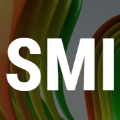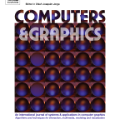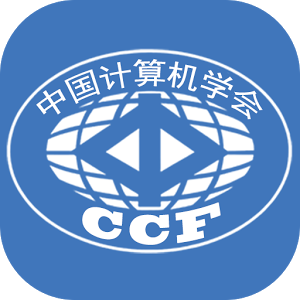计算机图形学 | CCF推荐期刊专刊信息2条
图形学与多媒体
Computers & Graphics
Call for papers: Shape Modelling International (SMI) 2019
全文截稿: 2019-03-11
影响因子: 1.2
CCF分类: C类
中科院JCR分区:
• 大类 : 工程技术 - 4区
• 小类 : 计算机:软件工程 - 4区
网址: http://www.journals.elsevier.com/computers-and-graphics
Shape Modeling International (SMI 2019), which this year is part of the International Geometry Summit 2019, provides an international forum for the dissemination of new mathematical theories and computational techniques for modeling, simulating and processing digital representations of shapes and their properties to a community of researchers, developers, students, and practitioners across a wide range of fields. Conference proceedings (long and short papers) will be published in a Special Issue of Computer & Graphics Journal, Elsevier. Papers presenting original research are being sought in all areas of shape modeling and its applications.
SMI 2019 will be co-located with the Symposium on Solid and Physical Modeling (SPM 2019), the SIAM Conference on Computational Geometric Design (SIAM/GD 2019), the International Conference on Geometric Modelling and Processing (GMP2019), as part of the Geometry Summit 2019.
The Fabrication and Sculpting Event (FASE 2019) will be organized in co-location with SMI 2019. FASE2019 will present original research at the intersection of theory and practice in shape modeling, fabrication and sculpting. SMI2019 also participates in the Replicability Stamp Initiative, an additional recognition for authors who are willing to go one step further, and in addition to publishing the paper, provide a complete open-source implementation. For more details, check the SMI2019 website.
We invite submissions related to, but not limited to, the following topics:
* Acquisition & reconstruction
* Behavior and animation models
* Compression & streaming
* Computational topology
* Correspondence & registration
* Curves & surfaces
* Deep Learning Techniques for Shape Processing
* Digital Fabrication & 3D Printing
* Exploration of shape collections
* Feature extraction and classification
* Healing & resampling
* Implicit surfaces
* Interactive modeling, design & editing
* Medial and skeletal representations
* Parametric & procedural models
* Segmentation
* Semantics of shapes
* Shape Analysis and Retrieval
* Shape Modeling applications (Biomedical, GIS, Artistic/cultural and others)
* Shape statistics
* Shape transformation, bending & deformation
* Simulation
* Sketching & 3D input modalities
* Triangle and polygonal meshes
* Shape modelling for 3D printing and fabrication
* Biomedical applications
* Artistic and cultural applications
图形学与多媒体
Signal Processing
Special Issue on Robust Multi-Channel Signal Processing and Applications: On the Occasion of the 80th Birthday of Johann F. Böhme
全文截稿: 2019-04-01
影响因子: 3.47
CCF分类: C类
中科院JCR分区:
• 大类 : 工程技术 - 2区
• 小类 : 工程:电子与电气 - 3区
网址: http://www.journals.elsevier.com/signal-processing/
Multi-Channel Signal Processing has been the focus of tremendous theoretical advances and applications over the last nearly four decades, and continues to attract much attention by the signal processing community in both research and applications. Practical applications of multi-channel signal processing are found in many digital signal processing and communication systems for wireless communication, radar, sonar and biomedicine, just to mention a few. This special issue is to celebrate Professor Johann F. Böhme 80th birthday (26 January 2020). Johann was a pillar of multi-channel signal processing research worldwide who made fundamental contributions that paved the way and inspired many others to follow suit. His legacy as an academic advisor is most notable in generations of fine engineers and scientists that he produced. The special issue aims at attracting manuscripts on timely topics by signal processing practitioners. It will showcase recent research in digital signal processing for multi-channel signal processing with a focus on robustness. Robust statistical methods account for the fact that the postulated models for the data are fulfilled only approximately and not exactly. In contrast to classical multi-channel signal processing, robust methods are not affected much by small changes in the data, such as outliers or small model departures. They also provide near-optimal performance when the assumptions hold exactly. Prospective papers should be unpublished and present novel, fundamental research offering innovative contributions either from a methodological or an application point of view. Tutorial papers will also be considered.
下载Call4Papers App,获取更多详细内容!


登录查看更多
相关内容
国际形状建模(SMI)会议它提供了一个国际论坛,用于向社区传播新的数学理论和计算技术,以建模、模拟和处理形状及其特性的数字表示形式来自广泛领域的研究人员,开发人员,学生和从业人员。会议论文集(长篇和短篇论文)将发表在《 Elsevier》的《 Computer&Graphics Journal》上。在形状建模及其应用的所有领域,都在寻求提供原创研究的论文。
官网地址:http://dblp.uni-trier.de/db/conf/smi/
Arxiv
78+阅读 · 2019年11月10日
Arxiv
4+阅读 · 2019年8月27日
Arxiv
6+阅读 · 2018年3月29日





